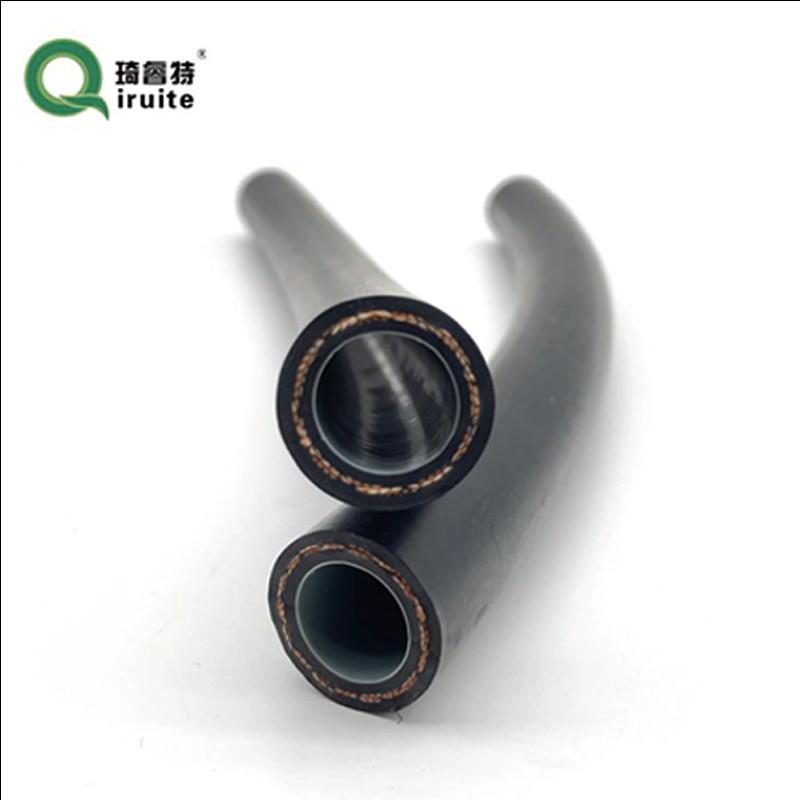SAE J2064 Type C A/C Hose – Low Permeation, OEM-Grade
What buyers really ask about: sae j2064 type c vs modern Type E AC hoses
If you’ve sourced automotive AC hoses for any length of time, you’ve seen the spec sheets blur together. But this year, procurement teams keep pinging me about sae j2064 type c and whether a Type E hose is a better move for R-1234yf fleets. Short answer: yes, in many cases. And one interesting product making the rounds is the E Type Factory Air Conditioning Hose (origin: Ningjin County, Hebei Province). It’s built for a constant 3.5 MPa working pressure and tested to SAE J2064 Type E performance. Let’s unpack what matters in real installs.

Industry trend: From sae j2064 type c to ultra-low permeation Type E
Type C barrier hose has been a workhorse for R-134a. But with R‑1234yf adoption and stricter emissions targets, Type E’s lower permeation and better thermal aging are becoming the default for new platforms. Several Tier-1s told me field returns dropped after switching to Type E in hot-climate fleets—less top-off, fewer callbacks. To be honest, that’s what operators care about.
Materials and manufacturing flow (how it’s actually made)
- Inner liner: PA (nylon) barrier layer to minimize refrigerant permeation.
- Tube/adhesion layers: NBR/EPDM blends for chemical resistance.
- Reinforcement: high-tenacity PET/PA textile braid for pressure control.
- Cover: ozone- and oil-resistant EPDM/CR, black, smooth finish.
- Process: precision extrusion → braiding → co-extrusion cover → vulcanization → cut/mark → cleanliness control.
- Testing: pressure proof, burst, helium leak, permeation, thermal shock, impulse cycles, ozone and bend fatigue.

Product snapshot: E Type Factory Air Conditioning Hose
| Working pressure | 3.5 MPa (constant across sizes) |
| Burst pressure | ≥ 4× WP (≈ 14 MPa), real-world use may vary |
| Temperature range | -40°C to +125°C (peaks to +135°C for short durations) |
| Refrigerants | R‑134a, R‑1234yf, compatible oils (PAG/POE) |
| Permeation | Meets SAE J2064 Type E limits (tighter than sae j2064 type c) |
| Sizes | Common IDs 6–16 mm; custom cuts available |
| Service life | Designed for 10–15 years in typical automotive duty |
Certifications buyers look for: IATF 16949 for automotive quality systems, ISO 14001 for environmental management, plus RoHS/REACH material declarations. Ask for the latest lot-level test report—seriously, it’s worth the email.
Where it’s used
- Passenger vehicles and light trucks switching from sae j2064 type c to Type E for R‑1234yf.
- Bus and coach HVAC loops; off-highway and construction equipment.
- Refrigerated vans and EV thermal management loops (battery chiller circuits).
Vendor snapshot and buying notes
| Vendor | Spec focus | Certs | Lead time | Customization |
|---|---|---|---|---|
| Ningjin-based OEM (E Type) | 3.5 MPa constant; Type E permeation | IATF 16949, ISO 14001 (ask to verify) | ≈ 2–4 weeks | Cut-to-length, branding, fittings |
| Global Tier-1 | Premium Type E, OE programs | IATF 16949, OEM approvals | 6–10 weeks | Full assemblies, PPAP Level 3 |
| Regional assembler | Type C or E depending on stock | Varies; request documents | 1–2 weeks | Quick-turn crimped sets |

Field notes and a quick case
A South China bus operator told me they replaced aging sae j2064 type c lines with this Type E hose during mid-life overhauls. After 14 months, their top-off intervals stretched from quarterly to “we barely track it now.” Not a lab result, sure, but the maintenance logs back it up.
Testing standards to tick off
- SAE J2064: permeability, burst, whip, vibration, impulse.
- Cleanliness ISO 16232 (for assemblies), helium leak screening.
- Ozone/UV exposure, salt spray on fittings (ASTM B117), and bend radius checks.
Bottom line: if your spec sheet still says sae j2064 type c, it’s worth qualifying a Type E hose—especially for R‑1234yf and any fleet where top-off costs sting.
Authoritative references
- SAE International — J2064: R-134a/R‑1234yf Refrigerant Automotive Air-Conditioning Hose Requirements.
- IATF 16949:2016 — Automotive Quality Management Systems.
- U.S. EPA SNAP Program and Section 609 MVAC guidance on refrigerants.
- ISO 14001: Environmental Management Systems for manufacturing sites.
-
Quick Release Ball Joint – Tool-Free, Durable, Leak-TightNewsNov.13,2025
-
Spiral Guard Hose Protection — Durable, UV-Resistant WrapNewsNov.13,2025
-
SAE J1401 Brake Hose Specifications: Durable, Low ExpansionNewsNov.13,2025
-
SAE J1401 Brake Hose Specifications | DOT-Approved, DurableNewsNov.13,2025
-
Spiral Guard Hose Protection - Abrasion-Resistant, UV-StableNewsNov.10,2025
-
SAE J1401 Brake Hose Specifications | DOT-Certified, DurableNewsNov.10,2025

